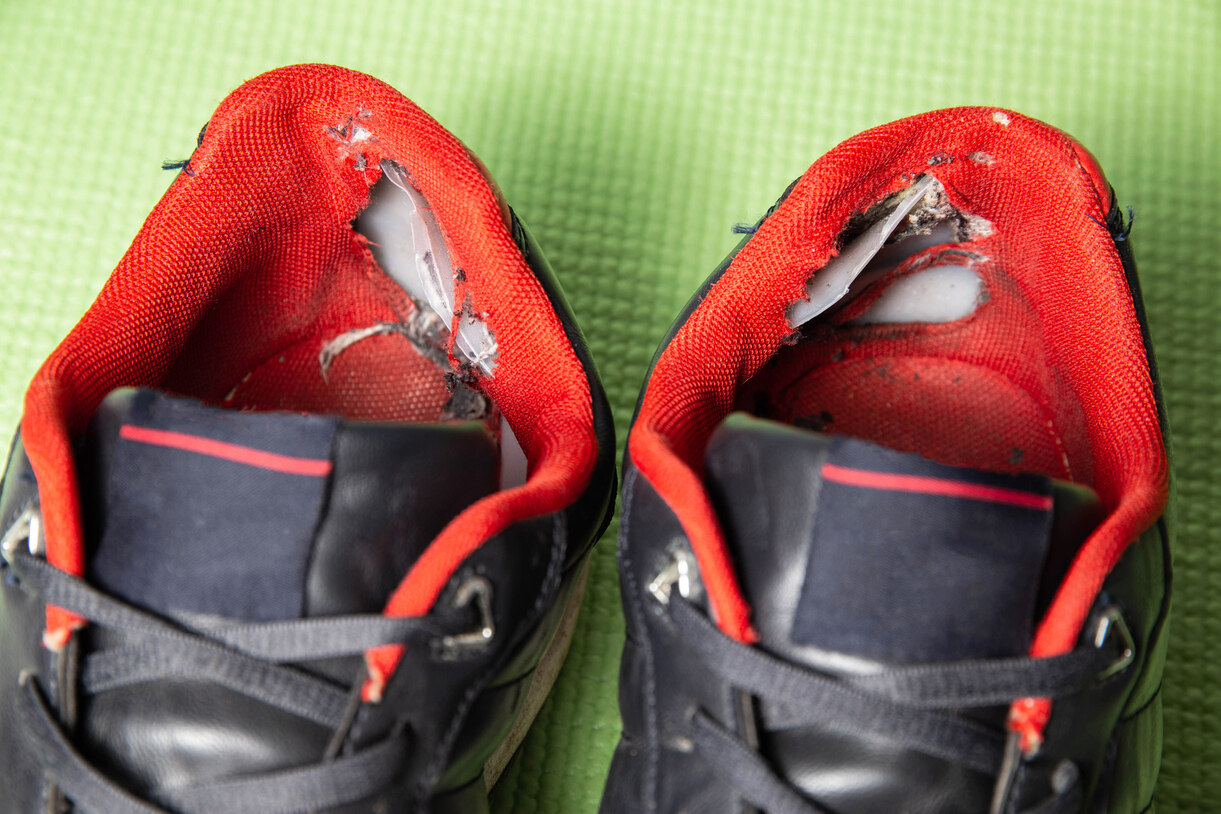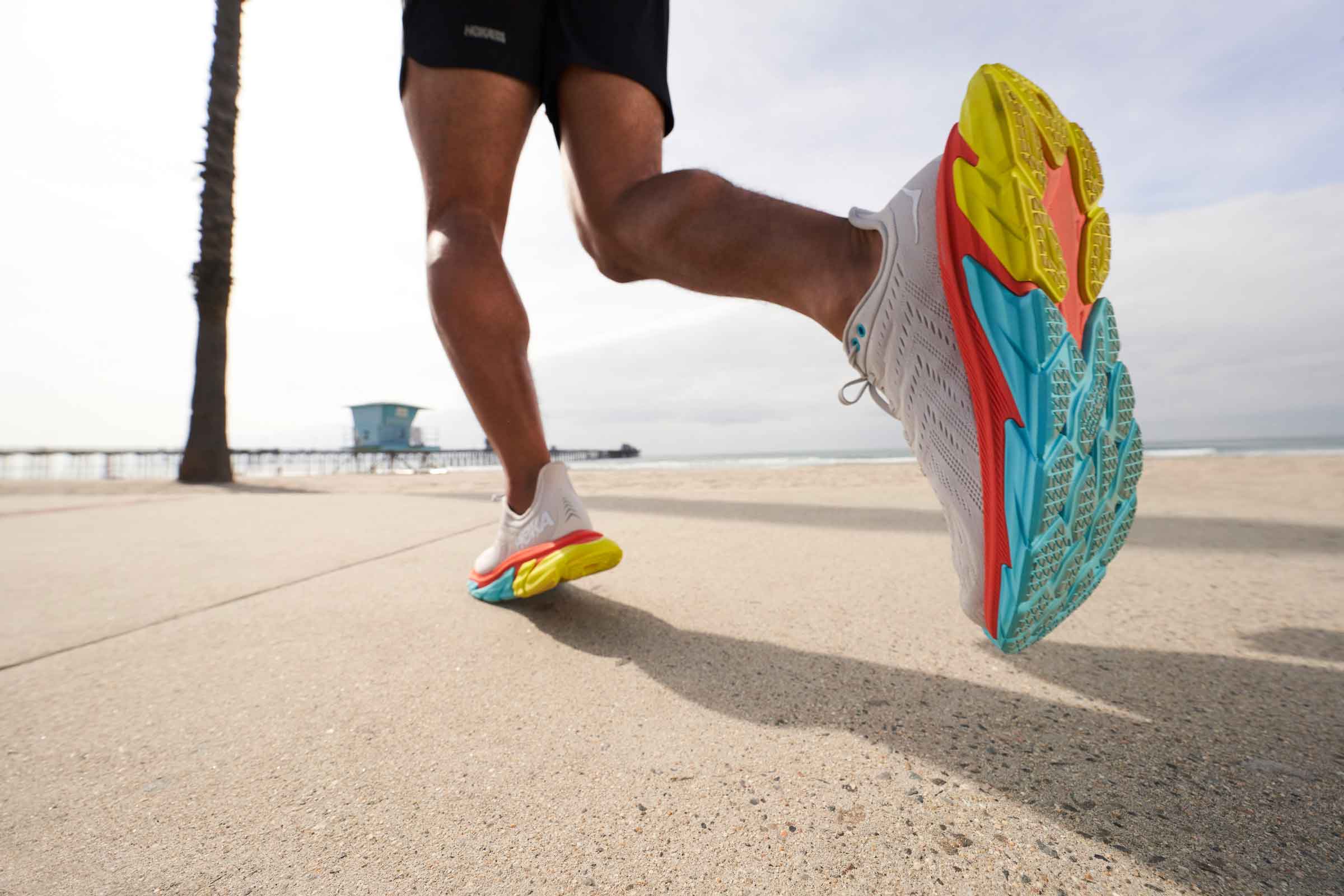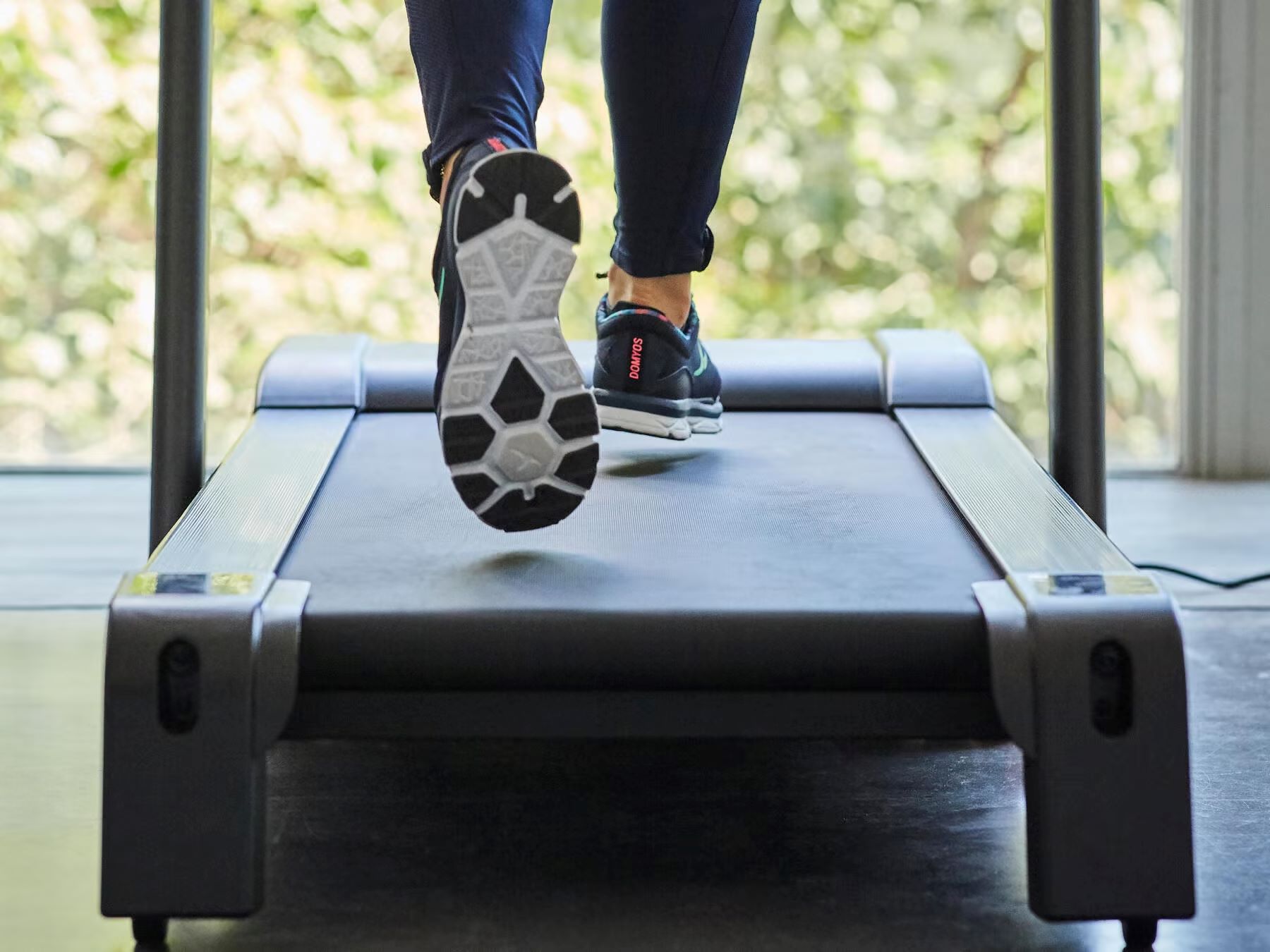

Featured
Why Is Proper Running Form Important
Modified: August 21, 2023
Learn why proper running form is crucial for runners. Our featured article explains the benefits and tips to improve your technique.
Introduction
Running is a popular form of exercise and a favorite activity for many people around the world. Whether you’re a seasoned marathon runner or just someone who enjoys a leisurely jog in the park, proper running form is of utmost importance. It not only helps you avoid injuries but also enhances your performance and overall running experience.
When we talk about proper running form, we refer to the optimal alignment and movement patterns that allow your body to move efficiently and comfortably while running. It involves factors such as posture, foot strike, arm movement, and cadence. By paying attention to these elements and making necessary adjustments, you can greatly improve your running technique.
In this article, we will explore the benefits of proper running form and provide you with tips to help you achieve it. Whether you’re a beginner or seasoned runner, understanding the significance of proper form will undoubtedly enhance your running journey. So let’s dive in and discover why proper running form is essential.
Benefits of Proper Running Form
Proper running form offers various benefits that can significantly impact your running experience. Whether you’re aiming to improve your performance, reduce the risk of injuries, or simply enhance your overall running efficiency, paying attention to your form is crucial. Here are some key benefits:
- Reduce the Risk of Injuries: One of the primary advantages of proper running form is its ability to minimize the risk of running-related injuries. When you maintain good alignment, engage the right muscles, and land with the correct foot strike, you distribute the impact forces more evenly throughout your body, reducing the strain on specific joints and muscles.
- Improve Running Efficiency and Performance: Proper running form allows you to optimize your energy expenditure and maximize your running efficiency. By reducing unnecessary movements and improving your stride length and frequency, you can cover more ground with less effort, potentially leading to improved running speed and endurance.
- Maintain Good Posture and Alignment: Running with proper form helps you maintain good posture and alignment throughout your run. This means keeping your spine straight, shoulders relaxed, and hips in line with the rest of your body. Good alignment not only improves your biomechanics but also minimizes the stress placed on your joints and muscles.
- Enhance Breathing and Oxygen Intake: Your breathing plays a crucial role in your running performance. Proper running form promotes efficient breathing by allowing your diaphragm to move freely and your lungs to fully expand. This increases your oxygen intake and helps fuel your muscles, leading to better endurance and performance.
By embracing proper running form, you can enjoy a more enjoyable and injury-free running experience. Whether you’re training for a race or simply running for fitness, the benefits of maintaining proper form are invaluable. In the following sections, we will explore some essential tips to help you achieve and maintain proper running form.
Reduce the Risk of Injuries
One of the most significant benefits of proper running form is its ability to reduce the risk of running-related injuries. Running puts repetitive stress on the body, especially on the joints, muscles, and connective tissues. By adopting proper form and technique, you can minimize the impact on these areas and prevent injuries. Here’s how:
- Maintain a Neutral Spine: Keeping a neutral spine during running helps to distribute the impact forces evenly throughout your body. Avoid slouching or leaning forward, as this puts excessive strain on your lower back and increases the risk of lower back pain and discomfort.
- Engage the Core Muscles: A strong core contributes to overall body stability while running. Engage your core muscles by drawing your navel towards your spine. This helps to stabilize your trunk and pelvis, reducing the risk of excessive rotation and potential knee and hip injuries.
- Land with a Midfoot Strike: Striking the ground with your midfoot instead of your heel helps to absorb the impact better. This distributes the force throughout the foot and leg, minimizing the strain on the joints and reducing the risk of conditions such as shin splints and knee pain.
- Keep Your Steps Light and Quick: Avoid overstriding and take light, quick steps. Overstriding can lead to increased impact forces and may result in injuries such as stress fractures or plantar fasciitis. Aim to maintain a cadence of around 180 steps per minute to help prevent overstriding.
- Listen to Your Body: Pay attention to any signs of discomfort or pain while running. Ignoring these warning signs can lead to overuse injuries. If you experience persistent pain, it’s important to rest and seek medical attention if necessary.
By incorporating these techniques into your running routine and always being mindful of your form, you can significantly reduce the risk of running-related injuries. However, it’s important to note that everyone’s body is different, and what works for one person may not work for another. If you have specific concerns or pre-existing conditions, it’s always advisable to consult with a healthcare professional or running coach for personalized guidance.
Improve Running Efficiency and Performance
Proper running form not only helps reduce the risk of injuries but also plays a crucial role in enhancing your running efficiency and performance. By focusing on your form, you can optimize your energy expenditure and improve various aspects of your running technique. Here’s how proper running form can improve efficiency and performance:
- Optimal Stride Length and Frequency: Maintaining proper form allows you to find the optimal balance between your stride length and stride frequency. Stride length refers to the distance covered with each step, while stride frequency is the number of steps per minute. Finding the right balance helps you cover more ground with less effort, leading to improved efficiency and speed.
- Smoother and More Efficient Biomechanics: Proper running form promotes smoother and more efficient biomechanical movement patterns. This means reducing any excessive side-to-side or up-and-down movements, which can waste energy. By staying aligned and moving in a straight line, you can optimize your energy transfer and conserve energy for better performance.
- Engagement of the Correct Muscles: When you run with proper form, you engage the right muscles at the right time. This includes activating your glutes, quads, and calves to generate power and propel yourself forward. Engaging these muscles effectively helps improve your running efficiency and performance.
- Better Oxygen Intake: Proper running form also affects your breathing. By maintaining good posture and allowing your diaphragm to move freely, you can enhance your oxygen intake. This ensures that your muscles receive sufficient oxygen, allowing them to perform optimally and improving your overall endurance.
- Mental Focus and Mind-Body Connection: Paying attention to your form while running helps create a strong mind-body connection. By being mindful of your movements, you can make small adjustments in real-time, allowing you to maintain proper form throughout your run. This mental focus can contribute to improved running efficiency and performance.
By consistently working on your form and incorporating these techniques into your training, you can enhance your running efficiency and overall performance. Remember, improving efficiency and performance is an ongoing process, and it’s important to be patient with yourself as you strive to refine your form and technique.
Maintain Good Posture and Alignment
Good posture and alignment are essential components of proper running form. When you maintain proper posture and alignment, you not only improve your running efficiency but also reduce the risk of injuries. Here are some tips for maintaining good posture and alignment while running:
- Keep Your Head Up: Avoid looking down at your feet while running. Instead, keep your head up and your gaze focused ahead. This helps align your spine and prevents unnecessary strain on your neck and upper back.
- Relax Your Shoulders: Tension in your shoulders can affect your entire upper body and hinder your running performance. Keep your shoulders relaxed and avoid hunching or tensing them up. Check-in periodically during your run to ensure you’re maintaining a relaxed upper body.
- Maintain a Neutral Spine: Your spine should be in a neutral position while running. Avoid arching your back or slouching forward. Imagine a straight line extending from your head to your tailbone, and strive to maintain that alignment throughout your run.
- Engage Your Core: A strong core helps stabilize your body while running and supports proper posture and alignment. Engage your abdominal muscles by drawing your navel towards your spine. This activates the deep core muscles and supports your trunk and pelvis.
- Align Your Hips and Pelvis: Your hips and pelvis should be aligned with the rest of your body. Avoid excessive twisting or tilting. This helps maintain a stable base and prevents unnecessary stress on your knees, hips, and lower back.
- Bend Your Arms at a 90-Degree Angle: Proper arm movement plays a vital role in maintaining overall posture and balance. Bend your elbows at 90 degrees and swing your arms naturally back and forth in coordination with your stride. This helps improve your running rhythm and stability.
By consciously focusing on these aspects of good posture and alignment, you can significantly improve your running form. It may take some practice and awareness initially, but with time, these habits will become ingrained in your running technique.
Enhance Breathing and Oxygen Intake
Your breathing plays a crucial role in your running performance. Proper running form can enhance your breathing ability and increase your oxygen intake, leading to improved endurance and overall running performance. Here are some tips to enhance your breathing and oxygen intake:
- Maintain Proper Posture: Good posture ensures that your airways are open and unrestricted, allowing for optimal airflow. Keep your head up, shoulders relaxed, and spine aligned to promote efficient breathing while running.
- Breathe Deeply: Take deep belly breaths while running to maximize your oxygen intake. Breathe in through your nose and exhale through your mouth to help expel carbon dioxide and bring in fresh oxygen.
- Allow the Diaphragm to Move: The diaphragm is a muscle located beneath your lungs that helps facilitate breathing. Allow your diaphragm to move downward and expand as you inhale, and contract as you exhale. This helps increase the efficiency of your breath and allows for greater oxygen intake.
- Control Your Breathing Rhythm: Find a breathing pattern that works best for you while running. Some runners find that a 2:2 ratio (inhaling for two steps and exhaling for two steps) or a 3:3 ratio is comfortable and allows for a balanced flow of oxygen. Experiment with different ratios to find what suits you.
- Sync Your Breathing with Your Stride: Coordinate your breathing with your stride to help establish a smooth and rhythmic pattern. This synchronization can help maintain a consistent pace and prevent breathlessness or side stitches.
- Practice Breathing Exercises: Incorporate breathing exercises into your training routine to improve your lung capacity and breath control. Deep breathing exercises, such as diaphragmatic breathing or pursed lip breathing, can help strengthen your respiratory muscles and enhance your breathing efficiency.
By focusing on your breathing and incorporating these techniques into your running routine, you can enhance your oxygen intake, improve endurance, and elevate your overall running performance.
Tips for Achieving Proper Running Form
Achieving and maintaining proper running form is a continuous process that requires practice and attention to detail. The following tips will help you improve your running technique and achieve proper form:
- Maintain a Relaxed Upper Body: Avoid tension in your shoulders, neck, and arms. Relax your upper body while running, allowing your arms to swing naturally and your shoulders to stay relaxed. Tension in the upper body can interfere with your running rhythm and efficiency.
- Engage the Core Muscles: Activate your core muscles by drawing your navel towards your spine. This helps stabilize your body and maintain proper alignment throughout your run. Engaging your core also facilitates efficient movement and reduces unnecessary strain on other muscles and joints.
- Focus on Foot Strike: Aim for a midfoot strike when landing your feet. Striking the ground with your midfoot helps to distribute the impact forces evenly throughout your body, reducing the risk of injuries. Avoid landing on your heel or forefoot as it can lead to excessive strain on certain areas.
- Maintain a Cadence of 180 Steps per Minute: Strive for a cadence of around 180 steps per minute, which is considered an optimal rhythm for efficient running. This cadence helps prevent overstriding and promotes a smoother running motion. Use a metronome or running app with a cadence feature to help you establish and maintain the desired tempo.
- Keep Your Eyes Forward: Look straight ahead rather than down at your feet. This helps maintain proper posture and alignment, allowing for better breathing and overall body mechanics. Keeping your eyes focused ahead also helps you stay aware of your surroundings and maintain balance.
- Land with a Slight forward Lean: Lean your body slightly forward from your ankles, maintaining a straight line from your head to your ankles. This slight forward lean helps utilize gravity for forward propulsion and prevents overstriding and excessive braking forces.
- Relax Your Hands and Maintain a Gentle Fist: Keep your hands and fingers relaxed while running. Avoid clenching your fists as this can create tension in your upper body. Instead, maintain a gentle fist shape with your fingers lightly touching your palms.
- Gradually Increase Mileage and Intensity: When working on improving your running form, it’s important to gradually increase your mileage and intensity. This allows your body to adapt to the changes and reduces the risk of overuse injuries. Gradual progress will help solidify your form improvements and enhance your overall running technique.
By incorporating these tips into your running routine and continuously focusing on your form, you can make significant strides towards achieving proper running form. Remember, it’s a journey, and progress may take time. Be patient, listen to your body, and celebrate the small improvements along the way.
Maintain a Relaxed Upper Body
When it comes to achieving proper running form, maintaining a relaxed upper body is essential. Tension in your shoulders, neck, and arms can negatively impact your running mechanics, leading to inefficient movement and potential injuries. Here are some tips to help you maintain a relaxed upper body while running:
- Shoulder Relaxation: Keep your shoulders relaxed and avoid hunching or tensing them up. Excessive tension in the shoulders can disrupt your running rhythm and cause discomfort. Focus on allowing your shoulders to drop naturally and maintaining a loose and comfortable posture.
- Arm Swing: Your arms play a crucial role in maintaining balance and coordination while running. Allow your arms to swing naturally back and forth, keeping them relaxed and bent at 90 degrees at the elbows. Avoid crossing your arms over your body or swinging them too wide, as it can throw off your running mechanics.
- Hand and Finger Relaxation: Keep your hands and fingers relaxed throughout your run. Avoid clenching your fists, as this can lead to unnecessary tension in the arms and shoulders. Instead, maintain a gentle fist shape with your fingers lightly touching your palms. This relaxed hand position will enable better blood circulation and allow for natural arm movement.
- Check-in Periodically: Regularly check in with your body during your run to ensure that you’re maintaining a relaxed upper body. Tension can often creep in unknowingly, so take moments to consciously release any tension you may be holding. Shake out your arms, roll your shoulders, and do a quick self-check to ensure you’re running with ease and relaxation.
- Focus on Breath Control: Pay attention to your breathing and use it as a cue to relax your upper body. When you feel tension building up, take a deep breath and consciously release the tension on the exhale. Use your breath as a tool to tune into your body and promote overall relaxation.
- Listen to Your Body: Every runner is different, and what feels relaxed and comfortable for one person may not work for another. Pay attention to your body’s signals and find the right balance between relaxation and control. Adjust your form as needed to suit your unique anatomy and running style.
By maintaining a relaxed upper body while running, you reduce the risk of unnecessary strain and improve your overall running experience. A relaxed upper body encourages proper alignment, allows for efficient movement, and keeps you comfortable during your runs. Practice these tips consistently to cultivate a relaxed and natural running form.
Engage the Core Muscles
Engaging the core muscles is a fundamental aspect of proper running form. A strong and stable core provides a solid foundation for efficient movement and helps prevent injuries. By activating and strengthening your core muscles, you can enhance your overall running performance. Here are some tips to help you engage your core muscles:
- Draw In Your Abdominals: Begin by drawing your navel towards your spine and engaging your deep abdominal muscles. This action activates the transverse abdominis, the deepest layer of abdominal muscles that acts as a natural corset for your core.
- Find a Balanced Pelvic Position: Maintain a neutral pelvic position while running. Avoid excessive tilting forward or backward, as it can throw off your alignment and stability. Aim for a position where your pelvis is aligned with your spine and hips.
- Include Core-Strengthening Exercises: Incorporate exercises that specifically target the core muscles into your training routine. Planks, Russian twists, and bicycle crunches are examples of exercises that can help strengthen your core. Gradually increase the intensity and duration of these exercises to continually challenge your core muscles.
- Focus on Form throughout Your Run: Be mindful of your core engagement as you run. Maintain a sense of stability and control by continuously activating your core and keeping your torso steady. This not only enhances your running efficiency but also reduces the risk of injuries stemming from instability.
- Practice Breathing and Core Connection: Coordinate your breath with your core engagement. As you draw in your abdominals, take deep breaths to expand your ribcage and allow your diaphragm to move freely. This combination of core engagement and deep breathing helps strengthen the connections between your breathing muscles and core muscles.
- Consider Cross-Training: Engaging the core muscles goes beyond running. Incorporate cross-training exercises such as yoga, Pilates, or strength training that specifically target the core. These exercises can help improve core strength, stability, and overall body awareness.
- Gradually Increase Core Engagement: Start by incorporating core engagement in short bursts during your runs and gradually work your way up to maintaining it throughout your entire run. This gradual progression allows your core muscles to adapt and strengthen over time.
Engaging your core muscles is essential for maintaining proper running form and promoting overall stability. Incorporate these tips into your training routine, focusing on core engagement and gradually building strength. Strong core muscles not only enhance your running performance but also contribute to better overall posture and injury prevention.
Land with a Midfoot Strike
The way you land your feet while running, specifically the foot strike pattern, has a significant impact on your overall running form. Landing with a midfoot strike is considered an optimal technique that promotes efficiency and reduces the risk of injuries. Here’s why landing with a midfoot strike is important and how to achieve it:
- Even Distribution of Impact: When you land with a midfoot strike, the impact forces are distributed more evenly throughout your foot and leg. This reduces the stress on specific areas, such as the heels or forefoot, and minimizes the risk of injuries like shin splints or plantar fasciitis.
- Enhanced Shock Absorption: A midfoot strike allows for better shock absorption upon landing. The foot’s natural arch acts as a natural shock absorber, dissipating the impact forces before they travel up the leg. This helps protect your joints and muscles from excessive stress.
- Improved Propulsion: Landing with a midfoot strike facilitates a quicker transition from landing to pushing off. This leads to a more efficient transfer of energy, allowing you to propel forward with each stride. The improved propulsion can enhance your speed and overall running performance.
- Avoid Overstriding: Overstriding, where your foot lands too far in front of your body, is a common mistake that can lead to inefficient running and increased risk of injuries. A midfoot strike naturally helps prevent overstriding by encouraging a shorter stride length, keeping your foot closer to your body’s center of mass.
- How to Achieve Midfoot Strike: To land with a midfoot strike, focus on landing with your foot directly under your body, rather than reaching out with your leg. Lean slightly forward from your ankles, maintaining a straight line from your head to your feet. This forward lean helps position your foot to land with the midfoot or the ball of your foot, achieving the desired foot strike.
- Gradual Transition: Transitioning to a midfoot strike may take time and practice, especially if you’re accustomed to a different foot strike pattern. Start by incorporating short intervals of midfoot striking during your runs, gradually increasing the duration. Listen to your body and allow it to adapt to the new technique.
- Balance Cushioning and Minimalist Shoes: The type of shoes you wear can also influence your foot strike pattern. Shoes with moderate cushioning provide a balance between shock absorption and ground feel, facilitating a midfoot strike. Alternatively, minimalist footwear encourages a more natural foot strike. Experiment and choose the right shoe that aligns with your running needs and foot strike preference.
By focusing on landing with a midfoot strike, you can improve your running form, reduce the risk of injuries, and enhance your overall running efficiency. Practice proper technique, be patient with the transition, and listen to your body’s feedback as you work towards achieving a midfoot strike.
Maintain a Cadence of 180 Steps per Minute
Running cadence, also known as stride rate, refers to the number of steps you take per minute while running. Maintaining a cadence of around 180 steps per minute has been widely regarded as an optimal rhythm for efficient running. A higher cadence helps reduce the risk of overstriding, improves running mechanics, and enhances overall performance. Here’s why maintaining a cadence of 180 steps per minute is important and how to achieve it:
- Prevent Overstriding: Overstriding, where your foot lands too far in front of your body, can lead to inefficient running and increased risk of injuries. A higher cadence encourages a shorter stride length, helping to prevent overstriding and keeping your foot closer to your body’s center of mass.
- Improve Running Efficiency: A higher cadence promotes a quicker turnover, allowing for a more efficient transfer of energy. It helps you spend less time on the ground between strides, reducing ground contact time and propelling you forward with each step. This improved efficiency can lead to faster running times and enhanced endurance.
- Reduce Stress on Joints: Increasing your cadence can help reduce the impact on your joints. With a higher cadence, each stride bears less force, allowing for a smoother and more controlled landing. This can help reduce the risk of joint-related injuries, such as knee pain or stress fractures.
- How to Achieve a 180 Steps per Minute Cadence: To work towards a cadence of 180 steps per minute, focus on quickening your turnover without straining. Begin by increasing your cadence gradually, aiming for small increments during your runs. You can use a metronome or running app with a cadence feature to help establish and maintain the desired tempo. The goal is to find a cadence that feels comfortable and natural for you.
- Focus on Shorter, Lighter Steps: Increasing your cadence doesn’t mean taking longer strides; instead, focus on taking shorter, lighter steps. Emphasize a quick and snappy leg turnover, allowing your feet to lightly skim the ground. Visualize your feet moving in a circular motion, like pedaling a bike, to help maintain a consistent and smooth cadence.
- Listen to the Beat of Music: Running with music that has a beat or tempo of around 180 beats per minute can help synchronize your strides. Many running playlists are curated specifically with this cadence in mind. Listening to music with the right tempo can serve as a natural metronome and guide your running cadence.
- Practice Regular Cadence Drills: Incorporate cadence drills into your training routine. Focus on maintaining a higher cadence for short intervals, gradually building your ability to sustain it for longer periods. Consistent practice will help train your body to adapt and become more efficient with a higher stride rate.
Maintaining a cadence of 180 steps per minute can have a significant impact on your running performance. Work on gradually increasing your cadence while focusing on shorter, lighter steps. Remember to listen to your body, find a comfortable rhythm, and make adjustments as needed to optimize your running mechanics and enjoy the benefits of an efficient stride rate.
Conclusion
Proper running form is crucial for injury prevention, running efficiency, and overall performance. By paying attention to various elements such as posture, foot strike, arm movement, and cadence, you can greatly enhance your running experience.
Maintaining a relaxed upper body helps reduce tension and promotes efficient movement. Engaging the core muscles provides stability and improves overall running mechanics. Landing with a midfoot strike helps distribute impact forces and reduces the risk of injuries. Keeping a cadence of 180 steps per minute encourages efficient turnover and better running economy. Additionally, focusing on breathing and oxygen intake optimizes endurance and performance.
To achieve proper running form, it’s important to be patient and consistent. Practice the tips provided, gradually incorporate new techniques, and listen to your body throughout the process. Remember that everyone is different, so find what works best for you and adapt your training accordingly.
By prioritizing proper running form, you can reduce the risk of injuries, improve running efficiency, and enhance your overall running experience. So lace up your running shoes, apply these tips, and enjoy the benefits of a better and more enjoyable run!









